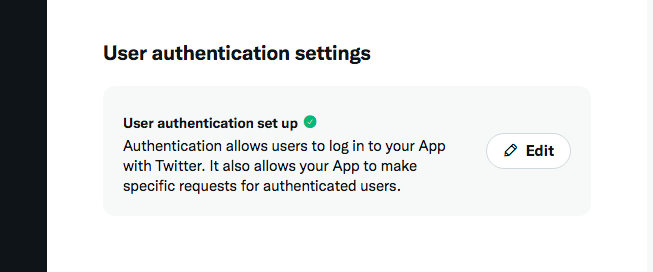Hi Badger,
thanks for the feedback!
- I keyed in my API & Secret Keys, and proceeded with the Authorize button. But nothing occurred. (No browser window pops out)
-
Currently some errors are logged to the console*, but might be filtered out if your log level is too high. You can enable
DEBUGlogging and probably see some helpful output in the console. -
If you’d see the
DEBUGlog, I’d highly suspect that you’ll see something like this along the lines:response body: <?xml version='1.0' encoding='UTF-8'?><errors><error code="417">Desktop applications only support the oauth_callback value 'oob'</error></errors> -
If that’s the case, you’ll need to set up “User authentication set up” in your Twitter project:

The crucial part is to supply the “Callback URI / Redirect URL” which must be exactly as follows (see node documentation):
http://localhost:55931
I’m still collecting plenty of feedback for this node, so please do let me know if that helps!
Best,
Philipp
*) We’ll improve this in the next release to show a proper error dialog as console output usually just gets lost